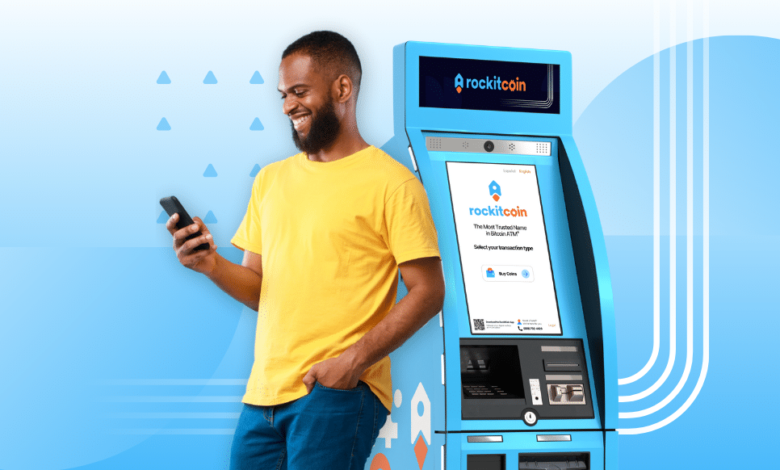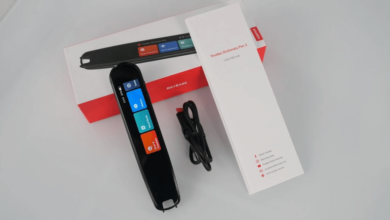What Is a Bitcoin ATM and How Does It Work?

Imagine walking up to a sleek, digital kiosk nestled between traditional ATMs in a bustling shopping mall, but instead of dispensing cash, it’s your gateway to the cryptocurrency world. You’ve just encountered a Bitcoin ATM, a novel tool that bridges the gap between digital currencies and everyday consumers.
These machines simplify the process of buying and selling Bitcoin, making it as easy as a regular bank transaction. But how exactly do they operate, and what should you know before you use one?
Let’s explore the intricacies of Bitcoin ATMs, their operational mechanisms, and why they’re becoming an indispensable part of the crypto landscape.
Defining Bitcoin ATMs
Bitcoin ATMs, a pivotal bridge between the digital and physical world, allow you to buy or sell bitcoins using cash or a debit card. Unlike traditional ATMs that give you access to your bank account, Bitcoin ATMs connect you directly to a cryptocurrency exchange. This means you can convert your fiat currency into Bitcoin such as EUR to BTC or vice versa, without the need for a middleman.
When you’re looking to transact, you’ll simply scan your bitcoin wallet address, insert your cash or swipe your card, and the equivalent amount of bitcoin based on current market rates is transferred to your wallet. It’s as straightforward as it sounds. Some machines also allow you to sell bitcoin for cash, where you send bitcoin from your wallet to the machine’s address and withdraw the equivalent amount in currency.
The Evolution of Bitcoin ATMs
Having explored the basic operations of Bitcoin ATMs, let’s now examine how they’ve evolved since their inception.
Initially, Bitcoin ATMs were quite a novelty, offering a tangible bridge between the digital currency world and traditional finance. They started popping up in coffee shops, shopping malls, and street corners, intriguing those who were curious about this new form of money but unsure about buying it online.
Over time, the technology behind Bitcoin ATMs has significantly advanced. You’ve likely noticed that the interfaces have become more user-friendly, allowing for smoother transactions. They’re not just for buying Bitcoin anymore; many machines now offer a variety of cryptocurrencies, including Ethereum and Litecoin, and some even allow you to sell your crypto for local currency.
The security features have also been enhanced. Initially, concerns about anonymity and potential misuse were rampant. Nowadays, most Bitcoin ATMs require some form of identity verification, aligning with global efforts to combat money laundering and financial terrorism.
This evolution reflects the growing acceptance and integration of cryptocurrencies into the mainstream financial ecosystem. As you’ve seen, Bitcoin ATMs have moved from being a curious experiment to a practical tool in the crypto user’s arsenal, making digital currencies more accessible to everyone.
How Bitcoin ATMs Operate
To understand how often you might use a Bitcoin ATM, it’s crucial to grasp their straightforward operation process.
Firstly, you’ll find these ATMs resemble traditional ones, but they’re designed for cryptocurrency transactions, primarily Bitcoin. You’ll typically start by verifying your identity; this often involves scanning a government-issued ID or entering a phone number. Security measures vary, but they’re in place to comply with regulatory standards, aiming to prevent fraud and money laundering.
Once you’re verified, the ATM prompts you to either buy or sell Bitcoin. If you’re buying, you’ll need to provide your Bitcoin wallet address. This can be done by scanning a QR code from your mobile wallet app. It ensures the purchased Bitcoin is sent to the right place.
For selling, the process is somewhat reversed. You’ll send Bitcoin from your wallet to an address provided by the ATM. After the transaction is confirmed on the blockchain, which might take a few minutes, the ATM dispenses cash equivalent to the amount of Bitcoin sold.
Buying Bitcoins Step-by-Step
First, you’ll need to locate a Bitcoin ATM, which you can easily find through various online directories or apps.
Once you’ve found a machine near you, prepare your Bitcoin wallet. You’ll need a digital wallet to store the Bitcoins you’re about to buy. If you don’t have one yet, download a reputable one and set it up on your mobile device. Ensure your wallet is ready to receive transactions.
At the Bitcoin ATM, select the option to buy Bitcoins. You’ll be prompted to enter the amount you wish to purchase. Remember, Bitcoin ATMs often have transaction limits and may require ID verification for larger purchases, so keep your ID handy if it’s your first time using that machine.
Next, scan your wallet’s QR code with the ATM’s scanner. This step is crucial as it directs where the purchased Bitcoins will be sent. After scanning, insert your cash into the machine. The amount you can insert varies, but the screen will guide you through the process.
Selling Bitcoins Simplified
After purchasing Bitcoins, you might wonder how to sell them; thankfully, the process is straightforward and similar to buying.
Firstly, you’ll need to find a Bitcoin ATM that supports selling Bitcoins, as not all do. Once you’ve located one, ensure you have your Bitcoin wallet ready for the transaction. The ATM will ask you to verify your identity, which typically involves scanning a government-issued ID or entering a phone number for a text verification. This step ensures the security of your transaction.
Next, you’ll select the option to sell Bitcoins on the ATM’s screen. You’ll be prompted to enter the amount of Bitcoin you wish to sell. After confirming the amount, the ATM will display a QR code. You’ll scan this code with your Bitcoin wallet app and send the specified amount of Bitcoin to the address provided by the ATM.
Once the transaction is verified on the blockchain, which can take a few minutes, the ATM will dispense the equivalent amount of cash. It’s that simple. The entire process mirrors buying but in reverse, providing a convenient way to convert your Bitcoins into cash without the need for online exchanges.
Security Measures and Compliance
Ensuring the security of transactions, Bitcoin ATMs adhere to stringent measures and compliance regulations. You’ll find that these machines require you to undergo identity verification processes, often involving SMS verification or presenting a government-issued ID. This step is crucial in combating fraud and adhering to anti-money laundering (AML) laws.
Moreover, Bitcoin ATMs operate under Know Your Customer (KYC) protocols. This means they collect and verify your personal information to prevent financial crimes. You’re contributing to a safer crypto environment by complying with these procedures.
To protect your data, Bitcoin ATMs are equipped with secure software that encrypts your information. Your privacy is paramount, and operators ensure that your sensitive details aren’t compromised. Additionally, transaction limits are set for each user to mitigate risks and ensure regulatory compliance.
You’ll also notice that Bitcoin ATMs are often placed in secure locations to safeguard both the machine and its users. Surveillance cameras and regular security audits are part of the compliance strategy, providing you with peace of mind while you transact.
Conclusion
In essence, you’ve now seen how Bitcoin ATMs bridge the digital currency world with the tangible one, making buying and selling bitcoins more accessible than ever.
They’re user-friendly, offering a straightforward process whether you’re looking to invest or cash out. Remember, though, always prioritize security and compliance to keep your transactions smooth and safe.
With Bitcoin ATMs, stepping into the cryptocurrency market is as simple as a trip to your local kiosk.





